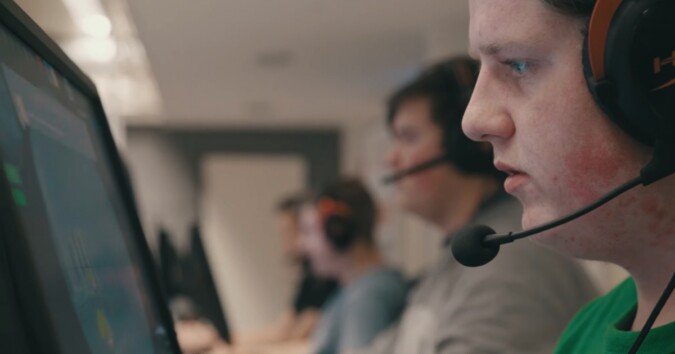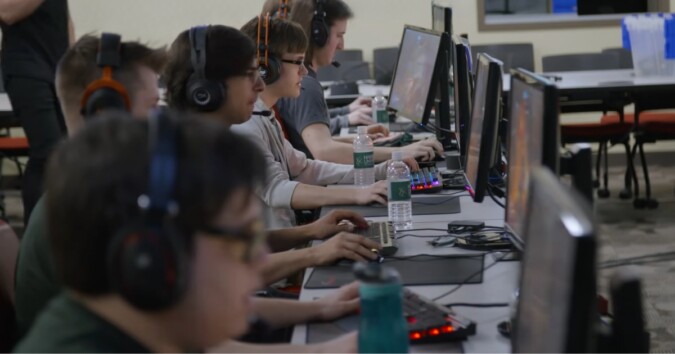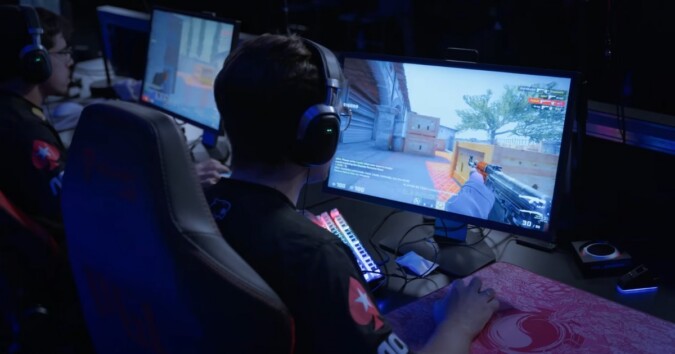From the dawn of the video gaming age, competitive play has been a core element, evolving into what we now recognize as esports. This term refers to electronic sports, a concept that predates today’s narrative-rich video games.
Reflecting on the past, we recall times when achieving the highest score in Space Invaders was a notable accomplishment. Dominating the scoreboard in those classic arcade games earned players local acclaim. As time progressed, the advent of PC gaming expanded its horizons, allowing individuals to compete against others far and wide, marking the nascent stages of the esports phenomenon.
Understanding its historical context, cultural significance, and economic impact is crucial for enthusiasts eager to dive into the esports realm or steadfast fans. In the “Esports for Beginners” feature, we aim to explore these topics. So, let’s delve in without further delay. Expert guidance and insights into the esports industry can be found with professionals such as Hellagoodmarketing agency.
What are Esports?
Esports, short for electronic sports, embodies the realm of competitive online gaming where participants vie for accolades, cash rewards, and recognition. Virtually any video game that allows for player competition has the potential to ascend to an esports status.
This includes a variety of genres, from sports simulations (like FIFA) to first-person shooters (such as Call of Duty) and even strategic card games (like Hearthstone). Competing in esports can be an individual pursuit or a team endeavor.
It demands dedication, skill acquisition, and extensive practice. Teams often benefit from coaching, secure sponsorships, and engage in preparatory matches known as ‘scrims’ ahead of major contests. The design of these games is inherently engaging, pushing players towards excellence with in-game rewards and milestones that recognize superior skill.
What are the Disadvantages of Esports?

In this comprehensive guide to esports, our objective is to delineate the potential risks linked to esports activities, aiming to enhance the safety of children and young people under your supervision, whether they are participants or spectators in esports environments.
This awareness is crucial for fostering a secure and positive experience as they engage with this rapidly growing form of entertainment and competition.
- Games might feature content unsuitable or upsetting for children and teenagers, including exposure to violent scenes or offensive language, encountered during gameplay or while watching others play.
- Many games offer purchasable loot boxes, or in-game treasure chests, which can encourage detrimental spending patterns, particularly when these boxes provide competitive edges. The concept of gambling, including the risks and rewards involved, might not be fully grasped by children and young people, heightening the risk of potential exploitation.
- Esports attract a global, diverse age group of players. In team-based games, it’s possible for a child under your supervision to be paired with unknown individuals. Such situations might inadvertently set the stage for grooming, a process where an adult befriends a young person to exploit or abuse them through a relationship built on trust and emotional connection.
- Online gaming often transcends various platforms, and young players might follow and interact with their favorite esports teams and personalities across different social media channels. Such interactions can increase the likelihood of contact with strangers, potentially opening up more opportunities for abuse. Additionally, end-to-end encryption on some platforms can ensure user interactions remain private, posing a challenge as these communications are not accessible for oversight by parents or law enforcement, thereby potentially safeguarding malicious activities.
- Dedication to practicing and participating in esports tournaments demands significant time investment, which might clash with educational responsibilities, disrupt sleep patterns, and alter family dynamics. Furthermore, this commitment can lead to increased stress levels, particularly if a young individual allocates all their leisure time to gaming, neglecting relaxation and other recreational activities.
- Similar to conventional sports, esports can evoke strong emotions, particularly in team contexts. A disappointing game or the underperformance of a favorite team can lead to frustration or distress among young players or fans. Such scenarios may trigger adverse emotional responses, including outbursts, sulking, or obsessive dwelling on the outcomes, affecting the child’s or teenager’s well-being.
- In contrast to conventional sports, which benefit from the oversight of established regulatory bodies such as UEFA in soccer, the esports sector lacks a universally acknowledged supervisory entity. While organizations like the International Esports Federation (IESF) are making initial efforts to establish worldwide regulatory frameworks, the industry still operates without a singular, authoritative governance structure. This absence of centralized regulation results in inconsistent accountability measures and variances in the rules overseeing competitions, thereby creating hurdles for the orderly and principled advancement of esports.
- Professional gamers frequently receive sponsorships from various brands, including energy drink companies like G Fuel and Glytch Energy. These companies often collaborate with well-known gaming personalities to develop ‘signature’ flavors, targeting their fan bases with specific promotional campaigns broadcast on live streams and through social media platforms. Such marketing strategies can significantly impact a young audience’s buying decisions, potentially enticing them to consume these products without fully considering the risks associated with high levels of caffeine.
Terms of Esports: Gaming Vocabulary

In the high-stakes world of competitive gaming, effective communication is pivotal for synchronizing team efforts and devising winning strategies. Esports athletes employ a set of standard commands to maintain alignment and coordinate actions during a match.
Below are some of the frequently utilized commands:
- Carry player: In many strategy games, this term refers to a pivotal player who, if adequately protected and supported by teammates, can significantly influence the game’s outcome. The team’s strategy often revolves around maximizing the player’s potential.
- Aggro or ‘take aggro’: This term is used to signify an aggressive strategy or maneuver. In gaming contexts, “aggro” can refer to the act of drawing the attention or attack of enemies. For example, taking aggro can mean provoking opponents to focus on you, allowing teammates to execute their strategies.
- BM: An abbreviation for “bad manners,” BM is used to denote unsportsmanlike conduct, such as taunting or insulting opponents. In professional esports, exhibiting BM can lead to penalties or disqualification.
- AoE (Area of Effect): This term describes spells or abilities that affect a specific zone rather than a single target, impacting multiple enemies or areas within the highlighted range on the game’s map.
- Camp: Often utilized in first-person shooter games, “camping” refers to the tactic of staying in one spot, usually well-hidden, to ambush unsuspecting opponents as they pass by.
- Grind: In gaming, to grind means to repeatedly perform tasks or defeat enemies to accumulate experience points, currency, or other in-game benefits. This term is common in both strategy and role-playing games.
- Frag: Primarily used in first-person shooters, a “frag” is a slang term for a kill. Announcing a frag typically means a player has successfully eliminated an opponent.
- Ganking: Derived from a combination of “gang” and “killing,” ganking is a strategy where players ambush and attack one or more unsuspecting opponents, usually with a numerical advantage.
- Harass or poke: This tactic involves consistently inflicting minor damage to enemies or their defenses, gradually gaining a strategic advantage without engaging in full-scale combat.
- Initiating: This command signals the start of a concerted attack or team fight, marking the transition from preparation or positioning to active engagement.
Best Esports Games
Numerous video games are elevated to the professional level in the esports arena, with players around the world competing in various titles. However, a few games stand out due to their immense popularity, competitive depth, and significant followings.
Counter-Strike: Global Offensive
The most recent version of the iconic Counter-Strike series introduces some new features while maintaining the core gameplay that has defined its predecessors. The central game mode, “Detonation,” pits two teams against each other as Terrorists and Counter-Terrorists. They navigate through distinct maps designed to support various playing tactics, with each match consisting of up to 30 rounds. A round ends when one team is eliminated or the Terrorists plant and detonate a bomb within a 115-second timeframe.
In this iteration, each weapon possesses specific characteristics concerning damage and precision, demanding high skill levels from players. Financial rewards are given for round victories, successful bomb detonations or refusals, and eliminating enemies. These earnings enable players to buy superior weaponry and gear at the beginning of new rounds. Typical map durations range from 20 to 40 minutes, offering intense and strategic gameplay sessions.
League of Legends
In competitive League of Legends, two teams comprising five players each strive to destroy the enemy’s Nexus while safeguarding their base. The game unfolds on a map peppered with adversarial players, defensive turrets, and continuously spawning AI-controlled minions.
This arena is segmented into three lanes, pathways for the minion waves, interspersed with a jungle area that offers additional strategic depth and resources. At the game’s outset, each player selects a distinct champion, whose abilities can be enhanced through gameplay. Champions grow stronger by acquiring experience, leveling up, and purchasing items using gold obtained from eliminating enemy champions, minions, or structures.
Given the team composition and the tri-lane architecture, strategic dominance often hinges on exploiting the ever-shifting power dynamics across the map, leveraging mobility and control of the terrain. Matches generally span from 20 to 40 minutes, demanding acute teamwork, strategic foresight, and adaptability.
Dota 2
The seminal Dota game is credited with originating the multiplayer online battle arena (MOBA) genre, gaining immense indie acclaim that set the stage for Valve’s Dota 2 to achieve monumental success.
Now positioned just behind League of Legends in the MOBA hierarchy, Dota 2 perpetuates the genre’s core gameplay with two teams of five players each vying for dominance on a map segmented by three main lanes.
Participants engage in combat with enemy towers and AI-controlled minions, accruing experience points and currency. These resources are vital for leveling up and purchasing items to enhance their capabilities. The ultimate objective is to obliterate the adversary’s stronghold, referred to as the “ancient.”
Dota 2 distinguishes itself with intricate gameplay features. These include a courier system for item transportation, advanced jungle tactics like “stacking,” and the distinctive “denying” mechanism, which allows players to eliminate their units and structures to prevent opponents from gaining gold and experience. Matches typically last from 25 to 45 minutes, demanding strategic depth and proficiency from its players.
VALORANT
VALORANT, Riot Games’ foray into the tactical shooter domain, has garnered considerable attention for its similarities to CS: GO and its significant impact on the esports scene. This character-based shooter pits two teams of five players against each other, blending precision shooting with the distinct abilities of its diverse agent roster.
With 18 unique agents to choose from, each bringing a distinct playstyle and strategic options, players engage in battles across various maps, taking on roles as either attackers or defenders.
At the start, players are equipped with a basic pistol and may possess initial charges for their signature abilities. The in-game economy allows players to purchase additional abilities and a range of weapons, from sidearms and SMGs to shotguns, rifles, and sniper rifles.
Victory in a match is determined by the first team to secure 13 rounds, achieved through eliminating the opposing team, successfully planting and detonating the spike (comparable to a bomb), or defusing the spike planted by the opponents. Match durations can range from 20 to 40 minutes, depending on the teams’ strategies and execution.
International Tournaments

The allure of esports tournaments is escalating daily, capturing the enthusiasm of teenagers and cultivating a dynamic competitive scene. Esteemed games like CS: GO, Dota 2, Fortnite, and PUBG are featured in a plethora of contests, spanning both official leagues and grassroots events, with competitions ranging from local showdowns to grand international championships.
With the increasing frequency of these events, the stakes are rising too, as evidenced by the soaring prize pools. Esports has transcended mere entertainment; for many, it has evolved into a viable career path.
Participants and personalities within this sphere are monetizing their skills and popularity through both tournament participation and live streaming, amassing substantial followings. This trend not only benefits individual gamers but also significantly boosts the overall stature and mainstream acceptance of esports.
Top ESports Tips
- Pay close attention to the age recommendations for games. Consult the PEGI (Pan European Game Information) rating to assess whether a game is suitable for the child or young person in your care to view or play.
- Participate in esports activities alongside your child. It’s beneficial for parents and caregivers to familiarize themselves with esports to comprehend its appeal. Observing tournaments and competitions together offers an accessible method to understand the esports environment. You can watch live streams of these events with your child, engage in conversations about the teams, players, and competition dynamics, and discuss various aspects highlighted in this esports guide. Such shared experiences can enhance your connection with the child or young person and provide valuable insights into their interests.
- Achieving the proper equilibrium is crucial. Advocate for reasonable limits on screen time to strike a balance between competitive gaming and maintaining healthy habits. Helping young people manage their gaming time empowers them to avoid stress and maintain control over their schedules. To facilitate this, consider using inquiries like “When will your match be finished?” or provide clear time boundaries, such as “You have 10 more minutes,” to set expectations and help them transition smoothly from gaming to other activities.
- Just like in conventional sports, achieving professional status in esports is not guaranteed for everyone. If a child or young person in your care aspires to become a professional player, managing their expectations while nurturing their dreams is crucial. Establish attainable objectives and recognize that aspiring to be a pro gamer is a valid ambition. Encourage their efforts and celebrate their achievements, no matter how small, and provide comfort and guidance in times of disappointment or failure. Being supportive yet realistic helps them develop resilience and a balanced perspective on success and setbacks.
- Promoting digital safety is essential in the esports environment. Instruct children to guard their details diligently, refraining from disclosing any identifiable information to fellow players, including those they consider friends. This includes their phone number, real name, home address, school name, or details about their extracurricular activities. Within the esports community, many players are recognized solely by their Gamertags or usernames, so it’s crucial to ensure that these aliases do not contain any information that could be used to identify them personally. Encouraging these practices helps maintain their privacy and security while engaging in online gaming.
- Creating a proactive plan is key to ensuring your child knows how to respond if they encounter disturbing content online. Introduce them to the concept of a “Trusted Adult” – a reliable figure they can approach during moments of distress, worry, or when facing troubling content. This plan should include clear steps on what actions to take and who to contact, reinforcing the idea that they are not alone and have a support network. Utilizing Trusted Adult resources can also help them identify whom they can trust and confide in, whether it’s a family member, teacher, or another responsible adult, ensuring they feel supported and secure in their online interactions.
Final Thoughts

Data underscores a luminous trajectory for the gaming sector, indicating its expansion is set to persist. For burgeoning esports athletes, the horizon brims with prospects for carving out robust gaming careers. Dedication and perseverance are key; with these, any player possesses the potential to ascend professionally within this field.
As you delve into the world of esports, you might find inspiration from the gaming habits of well-known personalities, shedding light on the diverse appeal of competitive gaming for both enthusiasts and celebrities alike.
Engage consistently with your chosen esports title, honing your prowess. The next step is to integrate into a professional team. Patience and persistence are essential ingredients on this journey. With them, you can thrive in the continuously burgeoning gaming landscape. I hope that “Esports for Beginners” not only enlightens but also motivates the esports luminaries of tomorrow.





